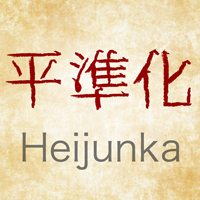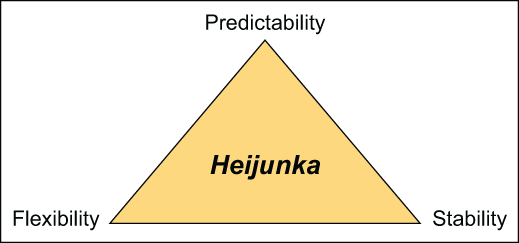SUMMARY KUNJUNGAN ILMIAH
PT COCA COLA AMATIL INDONESIA
on May, 22nd 2017, me and my friends are visited PT Coca Cola Amatil Indonesia to knowing how's the true SCM process in manufacture industry. And from that visited, I make this based on what I hear and get from that place.
History
1886
in New York Dr. John Styth Pemberton pharmacist in Atlanta, Georgia, United
States made a mix of water and some syrup which is made from coca leaf extract
and cola nuts (mixed carbonated water), at first the purpose of the drink is
for light medication for headache and flu but the reaction of the drinks is
very good. Then, His accountant and also his bestfriend, Frank Robitsen suggested
a name for the drink Coca Cola which is also the combination of two ingredients
and also thinking of the two “C” letters would stand out for advertising, he is
the one who wrote the coca cola letters by hand (Spencer) and then born the
most famous logo in the world.
 |
| logo of coca cola |
In 1888
the secret formula is sold by John Stith Pemberton to Asa G. Chandlerfi a
businessman. Robert W. Wouldruff (President of Coca Cola Company) have an idea
to made Coca Cola drink can be consumed by all nation in the world not just
enjoyed by American people only. So in 1929, The Coca Cola Coorperation was
built for selling process all over the world with the same identity, quality,
taste and freshness. Then, Asa G. Chandlerfi made a Coca Cola Company in Atlanta
in 1992 which is also patents the Coca Cola trademark/label. The company itself
is a main company of all bottling companies that own the Coca Cola trademark/label.
Coca
Cola first entered and introduced in Indonesia in 1927 and started the first
production in Jakarta in 1932. In 1991, Coca Cola Amatil (CCA) get in and make
a collaboration with the other companies. One year after that, they did the acquisition
with the other companies and Coca Cola Amatil Indonesia (CCAI) start their
first production. Coca Cola Amatil is a company in charge of producing, selling
and distributing under The Coca Cola Company license. They are one of the
largest companies of non-alcoholic drink ready in the Asia-Pasific region and
one of the world’s largest Coca Cola bottling companies. Its main company is
located in Sydney, Australia. In 1996, Coca-Cola Amatil start producing use a
preform plastic bottle (PET), before that they used a glass bottle or RGP (Refundable
Glass Bottle) with reverse logistics system now they are also using a can and
plastics. In 2002, Freshtea is introduced in Indonesia, why tea and not coffe?
Because they want their product can be consumed by all ages. Around that time
too, local brands of bottled drinking mineral water, Ades on acquisition. In
2008, Minute Maid and Coke Zero introduced in Indonesia. In 2014, Nutriboost introduced
in Indonesia. And now they are producing :
-
Sparkling water like Coca Cola, Sprite, Fanta, A&W,
etc
-
Tea like Freshtea
-
Juice like Minute Maid Pulpy with fruit grains
impoted from Florida, Brazil
-
Dairy is nutriboost
-
Isotonic, and Mineral Water like Ades.
Disribution
Coca
Cola Amatil Indonesia has 8 manufacturing plant in Indonesia, there are Coca
Cola Amatil in Medan, Coca Cola Amatil in Lampung (replacing Padang), Coca Cola
Amatil in Bandung, Coca Cola Amatil in Surabaya, Coca Cola Amatil in Semarang, Coca
Cola Amatil in Bali and there are also Bekasi that has two plant one of them is
at Cibitung which is the Biggest Coca Cola Amatil plant in Indonesia. With more
than 120 sales centers throughout Indonesia and more than 700.000 customer
deliveries every week and growing every year. To sources basic beverages,
services and goods unrelated to the product, CCAI has more than 2.800 suppliers.
They also have 37 production lines in Indonesia. Coca Cola Amatil Indonesia has
3 routes to market or distributed their products:
1.
From Plant or Mega DC (Distribution Center) to
CCOD (Coca Cola Official Distributor) first then to the customer.
2.
From the Plant or Mega DC (Distribution Center)
directly to the customer.
3.
From the Plant or Mega DC (Distribution Center)
by Bulk Transport vehicles to CCAI DC then delivery transport to the customer.
The meaning
of customer by Coca Cola Amatil Indonesia is everyone who sell coca cola’s
products, for the example is like cinemas, restaurants, outlets, supermarkets,
minimarkets, etc. For cinemas and restaurant they are using Bag in Box is like
dispenser for Sparkling water, it’s have CO2 installation and the other
facilities. For Supermarkets, Minimarkets and outlet sometimes they have a
refrigerator for their products.
For
their ingredients, the concentrate is imported from Atlanta because the plant
in Atlanta is the main distributor of concentrate for Coca Cola through
Cileungsi to the other Plant in Indonesia. And the fruit grains is imported
from Florida and Brazil in frozen condition because CCAI only can used a grains
which has been approved by Coca Cola Company for the same quality.
For
the machines they get it from German, because its has super duper high technologies
but for products that use plastics glass they use a machines made in Tangerang,
Indonesia and still manual or need human hand for packing.
The
products are transported to the sales center by large trucks and then
distributed to retailers by smaller vehicles. If CCAI sales placed in a line,
it’ll be as much as approximately 17km. This is the reason that makes CCAI is
the largest distribution companies in Indonesia. It’s estimated that over than
80% of CCAI products are sold through retailers and wholesalers where 90% are
included in the category of small business entrepreneurs. A very large CCAI
sales team not only sells their products to customers, but also advising on how
they should sell Coca Cola products. CCAI sales supervisors also do the quality
control to their products, that’s like regularly visit customers and provide
guidance, and accommodate customer feedback. Sales and distribution policies
are thoroughly directed by the National Office in Cibitung, Bekasi, but the
implementation of the policy is carried out by reliable and experiences
operational and regional managers and their staffs.
Thats my Summary, please remind me if theres something wrong in the grammar or in the information that I give.
 |
| why in this pict i look so stiff and funny tho |





























